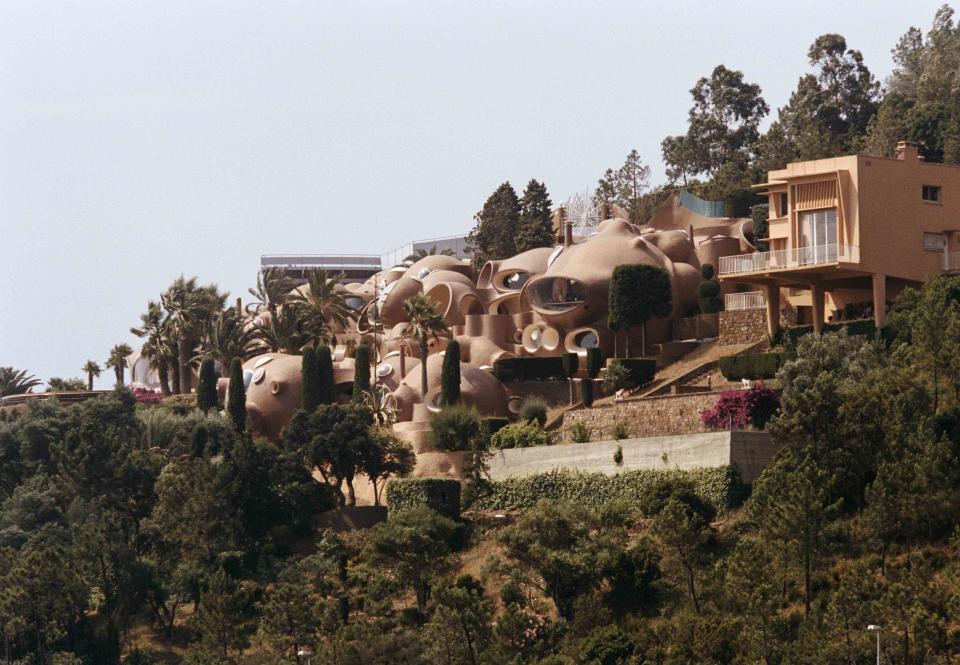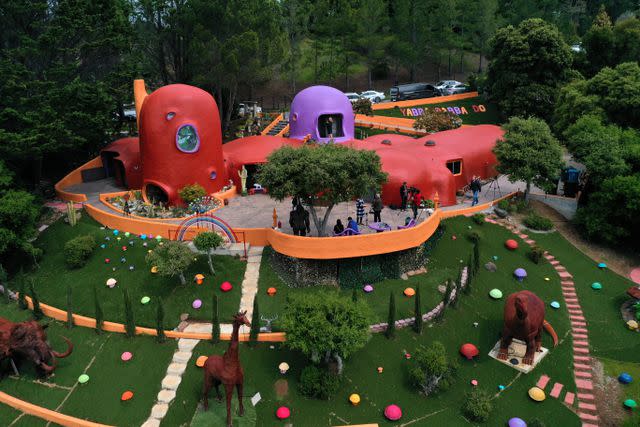Bubble Houses Put an Unexpected Spin on the Structures We’re Used To
Though far and few between, bubble houses offer a different take on the geometry our homes are used to.

Eric Robert / Contributor / Getty Images
Most residential architectural styles have at least one essential thing in common: right angles. Traditional Tudors, high-end midcentury modern homes, and modest cottages and ranches don't really stray from that convention. However, for legendary architect Wallace Neff, those parameters became too limiting.
Late in his career, after designing many iconic residences—including Pickfair, the home of silent screen stars Mary Pickford and Douglas Fairbanks—Neff was determined to create a new type of home, one from an entirely different orbit. Enter: the bubble house.
Related: Here's What Distinguishes the Most Popular American House Styles
While it's not likely that this type of house will become the norm for typical living quarters anytime soon, they offer a more lighthearted, creative take on architecture that's easy to picture when you think of a futuristic home. With Barbie's Dreamhouse being brought to life, the infamous dome topping the mansion in Glass Onion: A Knives Out Mystery, and curved-inspired furniture and decor pieces influencing interiors, these structures undoubtably have potential for home inspiration.
Just as the name implies, bubble houses are shaped like domes, with no vertical or horizontal walls. Dome-shaped dwelling spaces weren’t at all new when Neff's designs came around—the style has appeared in Indigenous structures like wickiups, wigwams, and igloos for ages. Plus, during Neff’s lifetime, American architect Buckminster Fuller created the "Geodesic Dome," which was spherical and similarly space-like.
However, Neff wanted to build using a process he dubbed “airform”— he would inflate a giant balloon, cover it with chicken wire, and spray it with gunite, creating a nearly-indestructible building. And, after designing a bubble house for himself, Neff was so enamored by the concept that he lived in it for the rest of his life.
Bubble houses were a great idea for a few reasons: They’re inexpensive to build, since there’s little construction involved, and the gunite is twice as strong as concrete—that means that, theoretically, the homes could last for decades without the need for structural repairs.
As the idea of bubble houses grew more popular, they began to pop up around the world under the names of different designers, with dome-shaped homes built in Austria, the Netherlands, and in Théoule-sur-Mer, France. There, you can find the magnificent Palais Bulles (Bubble Palace), once the home of designer Pierre Cardin, which was at one point listed for sale at $456 million (but did not sell).
Perhaps the most charming of all the bubble houses, The Flintstone House in Hillsborough, California, is an homage to the popular 1960s cartoon. Its colorful facade, while captivating to sight-seers, caused an uproar among neighbors—even prompting a lawsuit. Still, it remains as intended, giant dinosaur statues and all.

Justin Sullivan / Staff / Getty Images
As economically practical as bubble houses were, with no straight walls, homeowners found it a challenge to furnish them and find private spaces in their loft-like interiors. The quirks that made bubble houses charming ultimately made them, for most people, difficult to live in. Sadly, all of Neff’s bubble houses have been torn down, except for his own home. Located in Pasadena, California, it still stands as a testament to his passion and vision for what he hoped would be a revolutionary architectural style for home design.
For more Better Homes & Gardens news, make sure to sign up for our newsletter!
Read the original article on Better Homes & Gardens.

